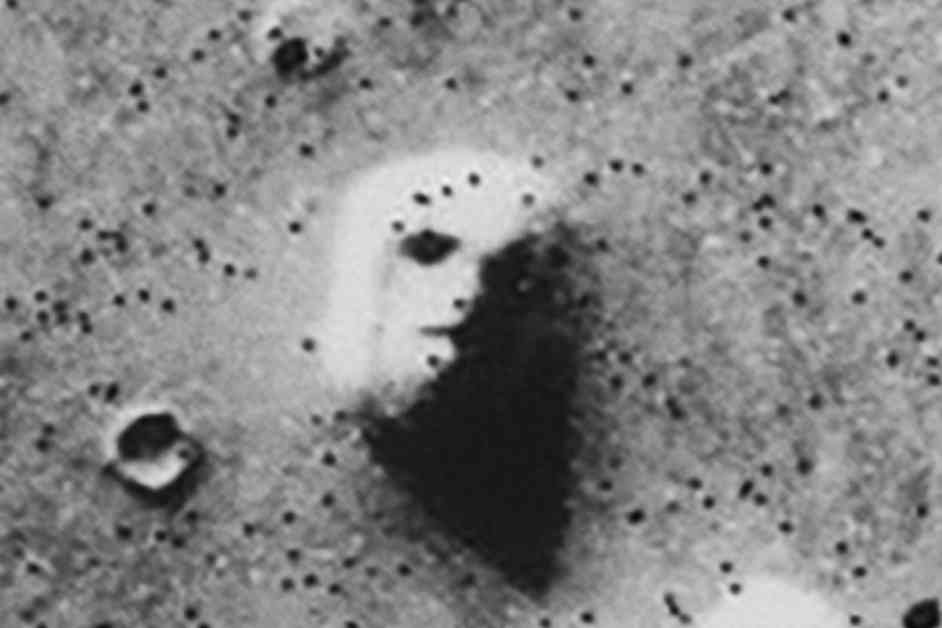For generations, people have been fascinated by the idea that Mars may have once been home to an advanced civilization. This belief was popularized by astronomer Percival Lowell in 1894 and gained renewed interest in the late 20th century with the discovery of a landform on Mars that appeared to resemble a human face. This image, captured by the NASA Viking 1 mission in 1976, sparked a wave of conspiracy theories and pseudoscience claims about ancient Martians.
However, further observations from later missions, such as NASA’s Mars Reconnaissance Orbiter, revealed that the face-like landform was simply a mesa, a natural rock formation that appeared face-like under specific lighting and angles. This phenomenon is known as pareidolia, where our brains recognize familiar patterns in random stimuli, such as seeing faces in clouds or wood grain patterns.
Pareidolia is a common occurrence, and faces are particularly prevalent in this phenomenon. We are wired to recognize faces, which can lead us to see them where they don’t actually exist. This tendency is evident in everyday objects, such as seeing a smiley face in two dots and a curved line. In the case of the Face on Mars, pareidolia led some to believe in an ancient alien tribute, only to be debunked by further scientific observations.
Astronomical objects are also prone to pareidolia, with nebulae and galaxies often resembling familiar shapes. For example, the Horsehead nebula in Orion appears like a cosmic chess piece, while the Witch Head nebula near Rigel resembles a witch or ghost depending on its orientation. Even the sun has been known to form a jack-o’-lantern face in a composite image of solar activity.
In addition to nebulae, stars and clusters can also exhibit pareidolic shapes. The Coat Hanger cluster and the 37 cluster, which resembles the numerals 3 and 7, are examples of this phenomenon. Craters on planets and moons, such as the “Man in the Moon” and the “heart” of Pluto, also showcase familiar shapes that are products of pareidolia.
While pareidolia can be entertaining, it also highlights the power of our brains to recognize patterns and shapes. This ability has played a crucial role in scientific discoveries and understanding the natural world. By being aware of pareidolia, we can differentiate between real phenomena and imagined patterns, avoiding falling into the trap of seeing things that are not truly there. Understanding this concept can help us approach scientific observations with a critical eye and appreciate the wonders of the universe without misconceptions.






